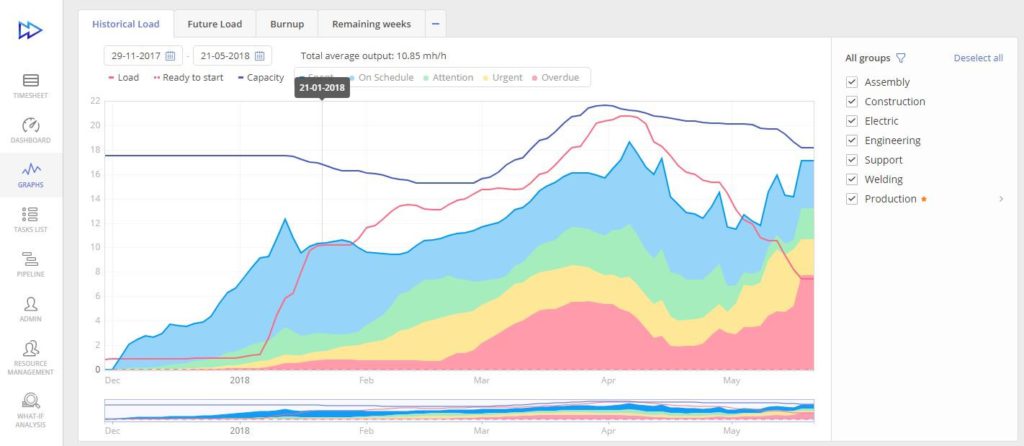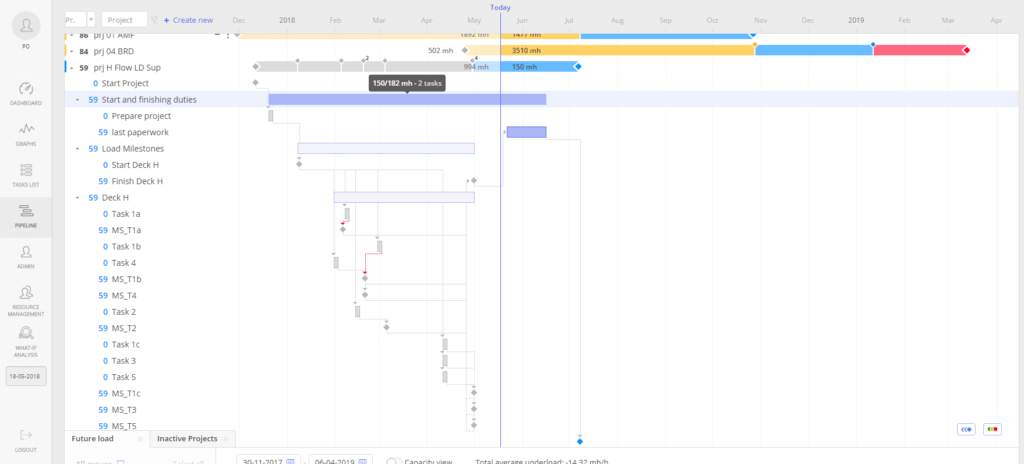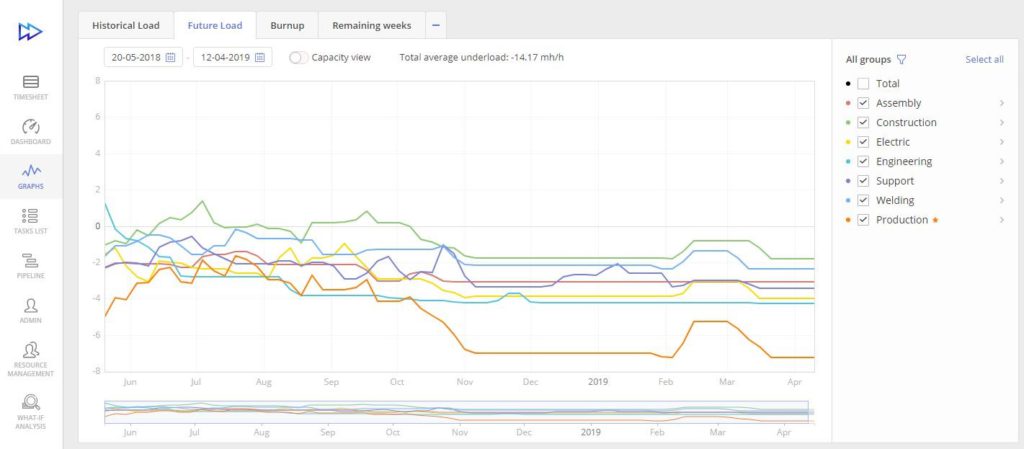How to make faster decisions with Epicflow?
Tags: epicflow, software tools

Although the first version of MS Project was released in 1984, only 22% of companies use project management software (research by Wellingtone, 2018). Real-time KPIs are not available for 55% of organisations and this has a negative impact on project decisions. It is important to report that 50% of employees spend a few working days per month creating reports that collect the necessary information. Why don’t 78% of companies realise that without suitable software tools, their efficiency decreases and their performance slows down?
From the past, over the present, to the future
Every decision a project manager makes is the result of a thorough analysis based on reliable information and experience. Every experience from the past is a set of knowledge, conclusions and data on the results of one’s previous actions. In order to succeed in current and future projects, you need to analyse the consequences of previous decisions in addition to your own experience. Knowledge of the current situation is also necessary: without full information and a clear picture of the tasks and processes, it is difficult to make informed decisions. It is important to know that every action you take also has a direct impact on the future. That is why it is important to reflect on the results in the future before a decision is taken. In order to make good project decisions, it is necessary that data that needs to be analysed for this are available in one place. Epicflow allows users to manage their information in a way that can make project decisions more efficient. The Epicflow algorithm automatically processes all data, analyses the situation from the past and output, and suggests the best way to allocate your resources and perform tasks according to the highest priorities.
How can I find the causes of project failure?
When we have a problem with overloaded resources in one or more projects or when we see clearly that the deadline(s) cannot be met, this is often a result of erroneous decisions in the past. When one or more problems arise, we need to adjust our project schedules and make other decisions. It’s just much better to avoid these problems and Epicflow will help you to do this.

The “Historical load” chart shows the workload, capacity and output of the past where different colors are used to indicate the status: blue symbolises “on track”, green means “attention”, yellow means “urgent” and red is used for “too late”. The two axes “Date” and “Full-time equivalent” contain past data for all selected groups of resources. Three sub-graphs contain the following information:
(1) Capacity reflects the expected output based on availability and scheduled hours for each team employee
(2) Load reflects the workload for the chosen teams at any given time
(3) Output shows the result achieved
In ideal conditions, output and capacity are the same. Any differences indicate that the team is over- or undercharged resulting in lower output.
What task should be solved first?
When working in a multi-project environment, setting priorities is one of the main points of attention of each project manager. Manual prioritising takes a lot of time and is often inaccurate. Setting wrong priorities often has far-reaching consequences for the implementation and outcome of one or more projects. Epicflow ensures an accurate and automatic real-time view of the right priorities.

Epicflow shows the current work flow with all interdependent and parallel processes in the module “Pipeline”. A Gantt chart displays more detailed information such as real-time data with milestones, work load, sprints and releases. Prioritising is one of epicflow’s key features, and priorities are displayed with the same colors as described in the “Historical Load” chart.
How can I be sure I have enough resources to start a new project?
In multi-project organisations you often find yourself in situations where projects are added to the current project portfolio. You will no longer be sure if your employees will succeed in finishing all tasks in a timely manner. In this case, good planning of projects and resources is even more important.
The “Future Load” chart shows whether your employees will be over- or undercharged in the future based on the current data in the pipeline. After all, overloading of employees means a bottleneck for a good multi-project flow. This chart shows the largest output your team can achieve for a given period of time when displaying capacity.
By using the “What if” analysis you can see whether decisions you want to make towards the future are reasonable. When these decisions are not realistic, the system will suggest different decisions and reflect the consequences of any changes to your schedule.

Conclusion
Choose a software solution in your (multi-) project environment that helps you to make decisions in a realistic and smooth way.
Gepost op March 15, 2020 at 10:47

